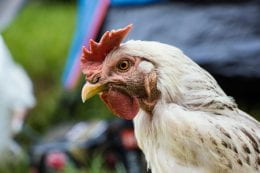
Currently, the H5N1 bird flu has been detected in over 1,000 wild birds in 36 states. The impact on commercial poultry facilities and backyard flocks has grown to 37 million birds in 34 states.
The best way to avoid bird flu is to avoid exposure. While people rarely get infected by bird flu, it can happen if it gets in your eyes, nose, mouth or inhaled by breathing. The virus can transmit via air, water droplets, or even dust. If any wild or domestic birds look sick, avoid direct contact when possible. If you touch or handle any sick or dead birds, always wash your hands with soap and water and wear respiratory protection or facemask.
For more information on bird flu, see the bird flu resources from the Centers for Disease Control and Prevention.